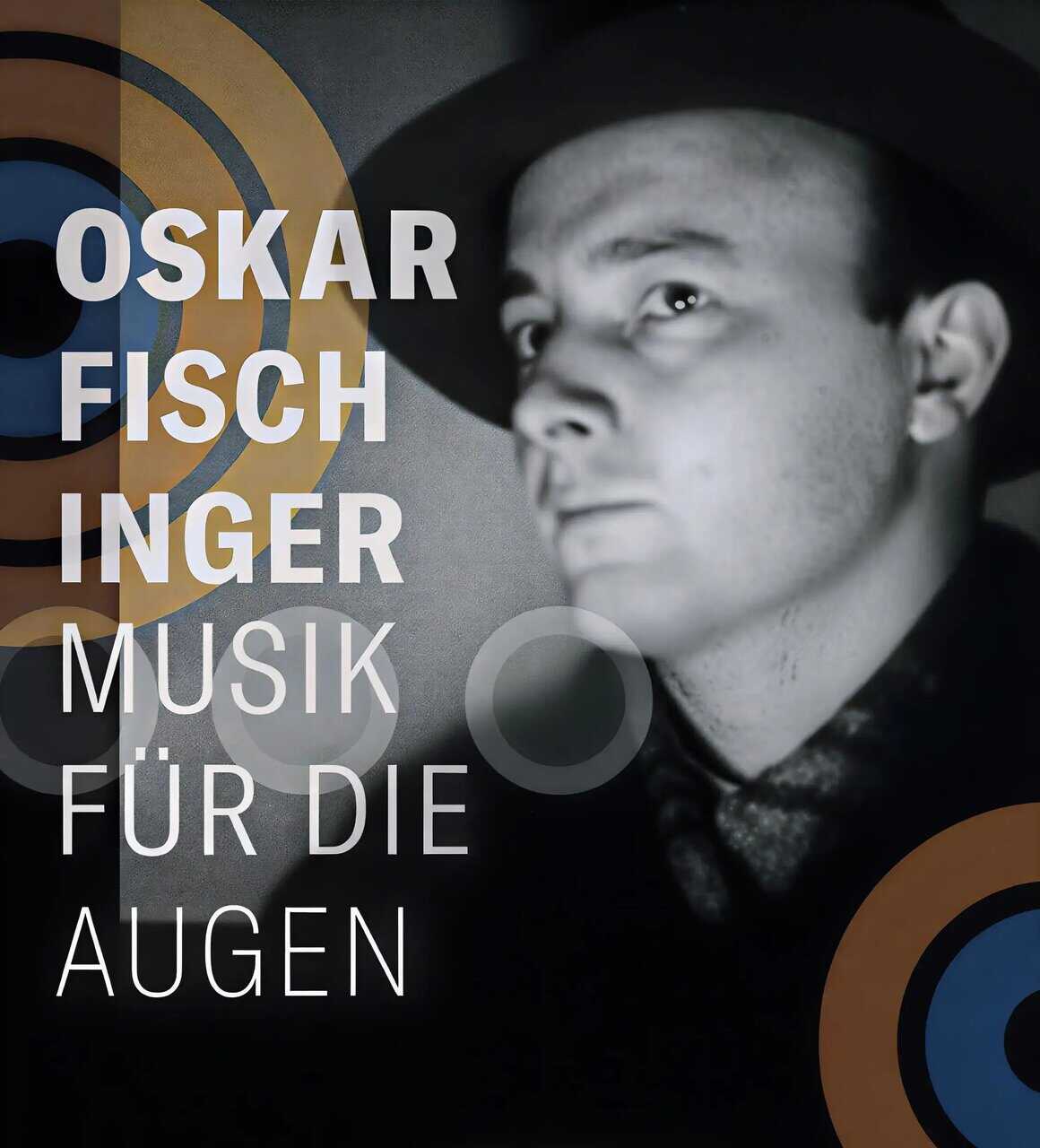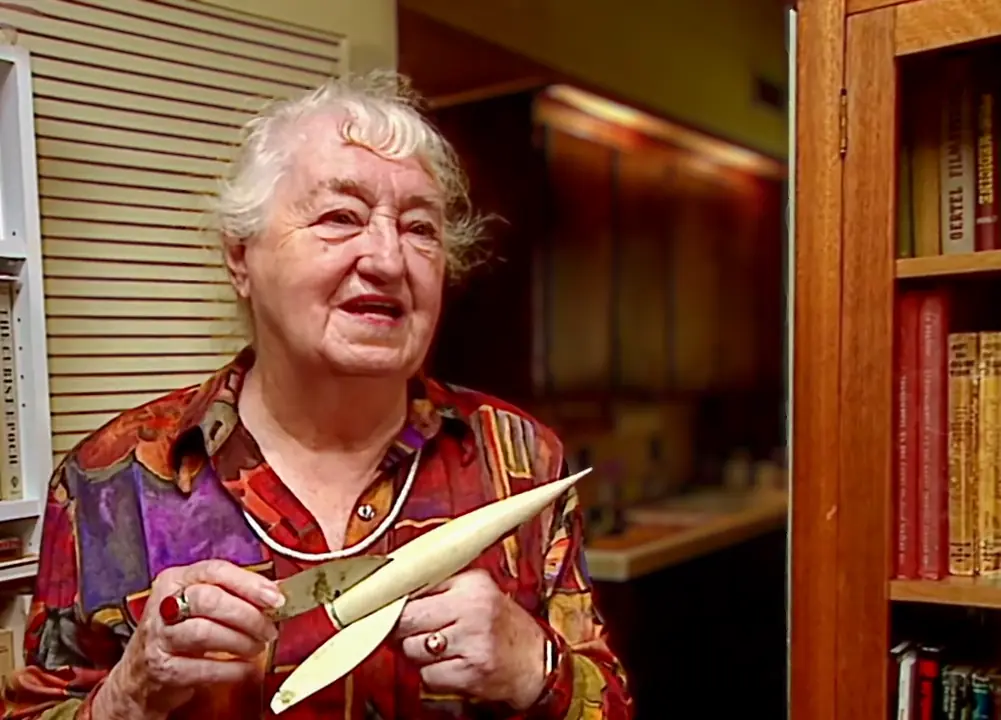R1 | RAUMLICHTMUSIK | 2023
What I invent belongs to the masses.
I am merely a catalyst.

Oskar Fischinger, born in 1900 in Gelnhausen and deceased in Los Angeles in 1967, was a visionary German pioneer of abstract animation. Long before the emergence of computer animation, music videos, or video art, he explored the interplay of abstract form, color, and sound. His tools were those of his time: paint, paper, wax, chemical emulsions, lignite-powered electricity, artificial light, and early light-to-sound devices.
Beginning in Berlin 1925, he created works using up to five simultaneous 35mm projections accompanied by live music. Fischinger, the “Zauberer der Friedrichstraße” (Wizard of Friedrichstraße), envisioned a future in which all art forms would merge into a unified concept he called Raumlichtmusik (spatial light music).
Some of his multiple projections have been preserved: “One of these survives, R-1, A Form-Play [R-1, Ein Formspiel], which contains elaborately edited mirror-image vertical patterns on the side panels and an equally intricate center montage of geometric shapes, cosmic symbols, organic wax and liquid oozes, and some drawn animation linking imagery … In any case, Fischinger’s extravagant, complex R-1 remains an astonishing manifestation of integral cinema and Color Music.” – Dr. William Moritz

Everything in the world has a spirit which is released by its sound
– Oskar Fischinger
Elfriede Fischinger, Oskar Fischinger’s wife and collaborator, was involved in nearly all his films from the mid-point of Studie Nr. 8 onward. She painted and selected colors for Kreise, assisted frame by frame on the Muratti greift ein advertising film, and co-created sequences in Komposition in Blau, some entirely her own. She also managed the studio, solved practical problems, and shaped the shared creative vision of their work. Her training in tapestry design informed her artistic precision and visual sensibility and had a significant influence on Fischinger’s later paintings.
Oskar Fischinger’s films were considered so avant-garde that they were labeled “degenerate art” during the Third Reich, prompting the couple’s emigration to the United States.
Harald Pulch first met Elfriede Fischinger at the Deutsches Filmmuseum in Frankfurt am Main, Germany. In 1993, she hosted Pulch and his cameraman Eckhard Jansen at her Long Beach home, where over five days she detailed the artistic life she shared with her husband, covering his career trajectory through Frankfurt, Munich, Berlin, and Hollywood.
Pulch’s documentary illuminates the lives and work of Oskar and Elfriede Fischinger, offering rare insight into their creative partnership. Having followed Oskar Fischinger’s career for four decades, Pulch collaborated with Ralf Ott to restructure and complete the film. After extensive digital restoration of Fischinger’s experimental animations and advertising classics, Oskar Fischinger – Musik für die Augen, which premiered in Fischinger’s birthplace Gelnhausen, emerges as a 90-minute historical document, reintroducing one of the 20th century’s most significant filmmakers to contemporary audiences.
In collaboration with Harald Pulch and Ralf Ott, we present R1 | RAUMLICHTMUSIK as a version (Fassung) and extension of Pulch’s film project Der Zauberer Oskar Fischinger. This immersive version is an experimental, documentary-artistic adaptation of the work of the Fischingers, conceived for multiple projections within a dome – such as those found in planetariums.
The title R1 refers to Fischinger’s 1927 film R-1, Ein Form-Spiel and simultaneously to the English pronunciation “Are One,” alluding to the unification of all arts in a single form and to the synergistic collaboration between Oskar and Elfriede Fischinger.
The project features a lecture by Michael Saup on the life and work of the Fischingers, followed by passages from Harald Pulch’s rare and unique historical interview with Elfriede Fischinger, interwoven with sequences from Oskar Fischinger’s oeuvre.
It continues with a montage of early film fragments by Oskar Fischinger, which the artist himself described and performed as Raumlichtmusik (“spatial light music”). Our production employs seven visual channels, twelve video projectors, and a specially composed 4.1 audio arrangement distributed across sixty loudspeakers. This adaptation comes remarkably close to Oskar Fischinger’s vision of multiple projections within a planetarium-like dome: a concept he formulated in the 1940s but was never able to realize himself.
We present Fischinger’s work to new audiences and generations, honoring the spirit of its creator:
What I invent belongs to the masses. I am merely a catalyst.
– Oskar Fischinger

Credits
R1 | RAUMLICHTMUSIK | Deep Data Dome Digital Documentary Derivative | 1927 | MMXXIII
Oskar Fischinger: Absoluter Film
Elfriede Fischinger: Partnerin, Mitarbeiterin, Zeitzeugin
Michael Saup: Director, Deep Data Dome Digital Documentary Derivative
Pino Grzybowsky: Music and Sound Design
Livia Montalesi: Vocals
Harald Pulch & Ralf Ott: interviews with Elfriede Fischinger, documentary “Musik für die Augen”, 1993/2023
The inventor of the music video.
– Deutschlandfunk Kultur
Directors’ statement
I remember being invited in 1990, as an emerging artist, to RENCONTRES INTERNATIONALES ART CINEMA / ART VIDEO / ART ORDINATEUR – a festival celebrating the finest independent art films from the first hundred years of cinema, held at La Vidéothèque de Paris in the subterranean Forum des Halles. I was there to show my work PARADAYS (1989). Among the program’s most contemporary offerings, one film stood out above all others: R-1, Ein Formspiel by Oskar Fischinger, created in 1927. Despite its age, it appeared as the most forward-looking manifestation of cinema in the entire festival – a triple projection in color.
Fischinger’s R-1, Ein Formspiel became a conceptual seed for my own work R111 (1999), which was recognized in 2024 by the International Association of Art Critics Japan as the potential pinnacle of media art at the turn of the millennium. Collaborating with Harald Pulch and Ralf Ott on an expanded documentary about Oskar and Elfriede Fischinger was a highlight, introducing Der Absolute Film to audiences who had never encountered it.
R-1, Ein Formspiel endures. This gem of a film shines beyond cultural cycles, technological hype, ephemeral trends, archival confines, and the regime of the transient, like a sun on the horizon between art and the artificial. As its creator said, it belongs to the masses – to all of us. It remains my favorite film.
Michael Saup, Berlin 2023
Despite the incredible support of today’s digital tools, the infinite amount of graphic animations we see on TV and digital media daily, they do not come close to the greatness of Oskar Fischinger.
– Leon Hong, Google Doodle